The sunken "Atlantis" off the coast of the island of Zakynthos was not created by people
This is the result of the life of whole colonies of microorganisms, scientists say
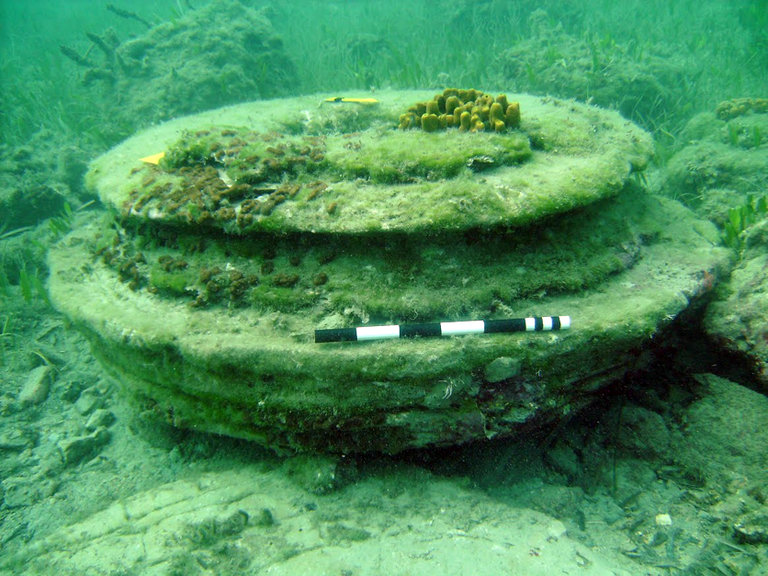
Two years ago, at the bottom of the Ionian Sea, tourists, who are fond of diving, discovered the “lost city”. As usual, rumors immediately spread that this was Atlantis, which had been unsuccessfully searched for for hundreds of years. The study of the city engaged in archaeologists who discovered the remains of the columns (base) and paving stones. Were found and other elements of the buildings, the appearance of which very much resembled the elements of buildings of ancient buildings. But there was one oddity in the city - no matter how many experts studied it, not a single human artifact was found.
')
Initially, scientists believed that this city was used as a port, which over time went under water. However, no tools, no shards, no one has ever seen. But for a city of this magnitude, the absence of artifacts is nonsense. Archaeologists began underwater excavations, but found nothing. Experts studied the chemical and isotopic composition of the stones of the “building elements”, after which the origin of the “city” was clarified. It turned out to be dolomite and some other sedimentary rocks with a high level of oxygen isotope-19 and a low level of carbon-13 isotope. After the results of the analysis became known, the situation became clearer - the “city” was not created by people orreptilians by the Atlanteans.
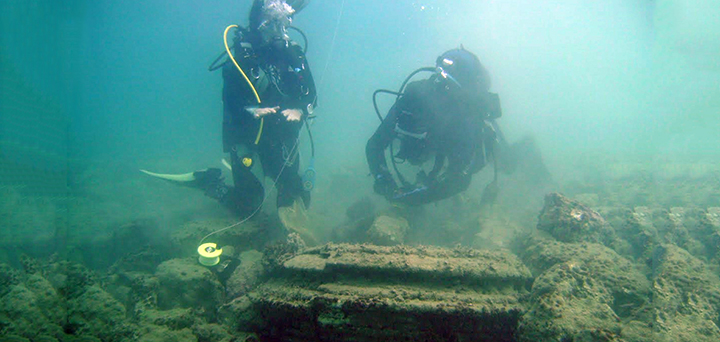
The bases of the “columns”, “paving stones” and everything else created the columns of sulphate-reducing bacteria that lived around small crevasses on the seabed. Previously, methane was released from these clefts. By absorbing gas dissolved in water, microorganisms isolated a number of other substances that precipitated calcium, magnesium and other compounds. All this was found out by a team of scientists led by Julian Andrews, a geochemist from the University of East Anglia ( University of East Anglia ). The results of the work were published in the authoritative edition of Marine and Petroleum Geology .
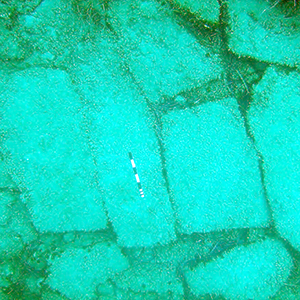
“We surveyed the place submerged under water by 1-2 meters, and found that it was a natural formation. The construction process of the “city” began about five million years ago. Microbes have coped with construction in just a few hundred years, thanks to optimal conditions for living in this place.
Sulfate-reducing bacteria (other names are desulfating, sulfidogenic) is a heterogeneous group of eubacteria, representatives of which are distinguished by their ability to receive energy through oxidation under anaerobic conditions of hydrogen, using sulfate as the final electron acceptor. Considered one of the oldest organisms on the planet (estimated age - up to 3.5 billion years). Thus, their contribution to the sulfur cycle on the planet was decisive already in the initial stages of the formation of the biosphere. It is assumed that these bacteria were the dominant form of life in the oceans on the border of the Permian and lower Triassic periods (approximately 250 million years ago).
According to scientists, similar formations are not very rare, but usually they are at a depth of hundreds or even thousands of meters.
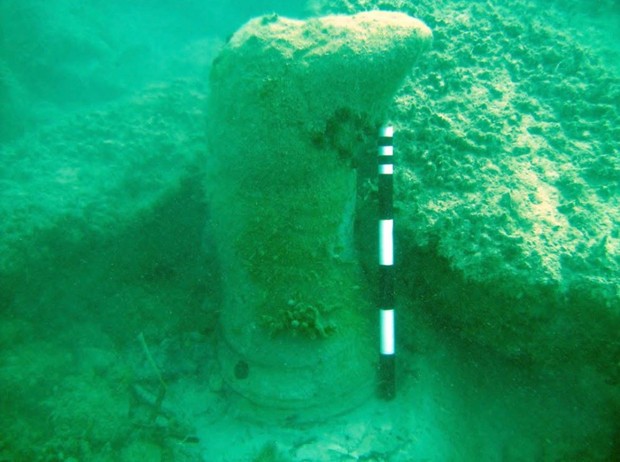




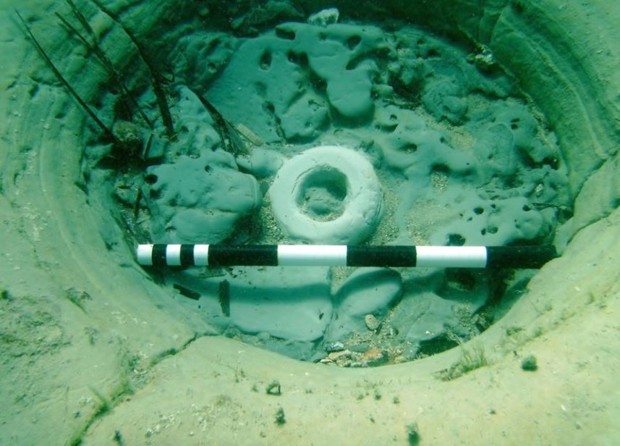
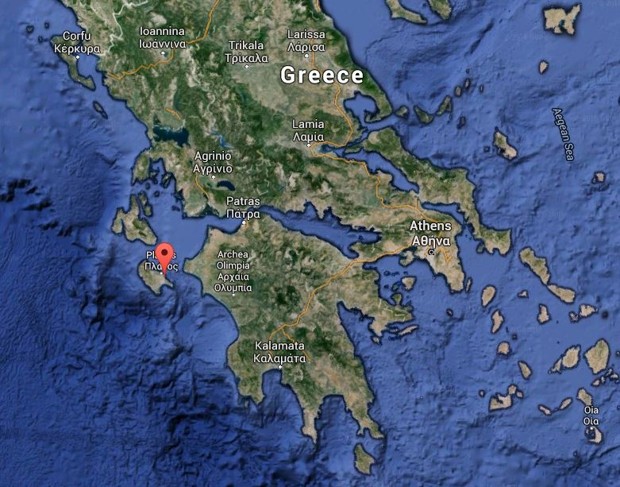

Two years ago, at the bottom of the Ionian Sea, tourists, who are fond of diving, discovered the “lost city”. As usual, rumors immediately spread that this was Atlantis, which had been unsuccessfully searched for for hundreds of years. The study of the city engaged in archaeologists who discovered the remains of the columns (base) and paving stones. Were found and other elements of the buildings, the appearance of which very much resembled the elements of buildings of ancient buildings. But there was one oddity in the city - no matter how many experts studied it, not a single human artifact was found.
')
Initially, scientists believed that this city was used as a port, which over time went under water. However, no tools, no shards, no one has ever seen. But for a city of this magnitude, the absence of artifacts is nonsense. Archaeologists began underwater excavations, but found nothing. Experts studied the chemical and isotopic composition of the stones of the “building elements”, after which the origin of the “city” was clarified. It turned out to be dolomite and some other sedimentary rocks with a high level of oxygen isotope-19 and a low level of carbon-13 isotope. After the results of the analysis became known, the situation became clearer - the “city” was not created by people or

The bases of the “columns”, “paving stones” and everything else created the columns of sulphate-reducing bacteria that lived around small crevasses on the seabed. Previously, methane was released from these clefts. By absorbing gas dissolved in water, microorganisms isolated a number of other substances that precipitated calcium, magnesium and other compounds. All this was found out by a team of scientists led by Julian Andrews, a geochemist from the University of East Anglia ( University of East Anglia ). The results of the work were published in the authoritative edition of Marine and Petroleum Geology .

“We surveyed the place submerged under water by 1-2 meters, and found that it was a natural formation. The construction process of the “city” began about five million years ago. Microbes have coped with construction in just a few hundred years, thanks to optimal conditions for living in this place.
Sulfate-reducing bacteria (other names are desulfating, sulfidogenic) is a heterogeneous group of eubacteria, representatives of which are distinguished by their ability to receive energy through oxidation under anaerobic conditions of hydrogen, using sulfate as the final electron acceptor. Considered one of the oldest organisms on the planet (estimated age - up to 3.5 billion years). Thus, their contribution to the sulfur cycle on the planet was decisive already in the initial stages of the formation of the biosphere. It is assumed that these bacteria were the dominant form of life in the oceans on the border of the Permian and lower Triassic periods (approximately 250 million years ago).
According to scientists, similar formations are not very rare, but usually they are at a depth of hundreds or even thousands of meters.







Source: https://habr.com/ru/post/394715/
All Articles